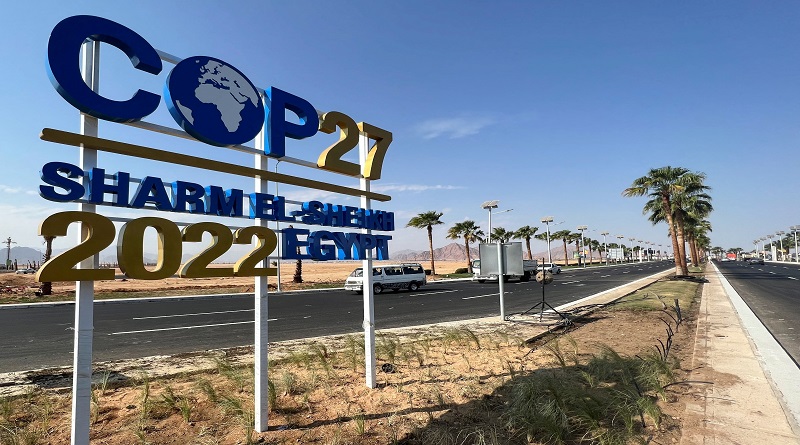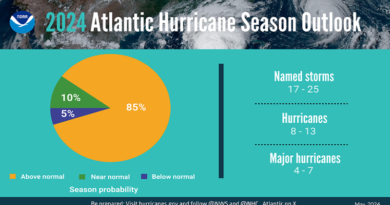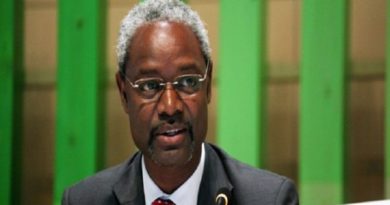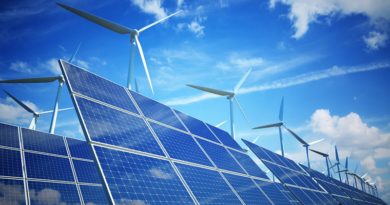COP27: Scientists warn against limits of adaptation
At COP27 in Sharm el-Sheikh, Egypt, leading global experts from the natural and social sciences today presented ten essential insights on climate change since 2021. A key focus was on the limits of humankind to adapt to the inevitable impacts of climate change, which include ever more frequent and severe drought, storms and floods.
The 10 New Insights in Climate Science presents key insights from the latest climate change-related research this year and responds to clear calls for policy guidance during this critical decade.
The report was launched by the international networks Future Earth, The Earth League and World Climate Research Programme (WCRP).
The launch event was attended by UN Climate Change Executive Secretary Simon Stiell, who said: “Science provides the evidence and data on the impacts of climate change, but it also gives us the tools and knowledge as how we need to address it. As the Egyptian COP27 Presidency has made very clear, we are now clearly in the era of implementation, and that means action. But none of this can happen without data, without evidence to inform decisions, or the science that supports programs and policies.”
In the scientific synthesis report, scientists from around the world emphasize and unpack the complex interactions between climate change and other drivers of risk, such as conflicts, pandemics, food crises and underlying development challenges. The scientists find that the potential to adapt to climate change is not limitless.
Rising sea levels capable of submerging coastal communities and extreme heat intolerable to the human body, are examples of ‘hard’ limits to our ability to adapt. They also highlight that over 3 billion people will inhabit ‘vulnerability hotspots’ – areas with the highest susceptibility to being adversely affected by climate-driven hazards – by 2050, double what it is today.
“Adaptation alone cannot keep up with the impacts of climate change, which are already worse than predicted,” Stiell said. “Adaptation actions are still crucial and are critical to upgrade small-scale, fragmented and reactive efforts. But the potential to adapt to climate change is not limitless. And they will not prevent all losses and damage that we’ve seen. I therefore applaud Parties for getting Loss and Damage onto the agenda for COP27 and I look forward to a thorough discussion on this issue.”
The scientists further outline that persistent dependence on fossil fuels exacerbates major vulnerabilities, notably for energy and food security, and that deep and swift mitigation to tackle the drivers of climate change is immediately necessary to avert and minimize future loss and damage.
“The less we mitigate, the more we have to adapt. So, investing in mitigation is a way of reducing the need to invest on adaptation and resilience. That means tabling stronger national climate action plans — and doing so now,” said Stiell.
Prof. Johan Rockström, co-chair of the Earth League, the Earth Commission and Director of the Potsdam Institute for Climate Impact Research said: ” As science advances, we have more evidence of massive costs, risks but also global benefits of reduced loss and damage, through an orderly safe landing of the world within the Paris climate range. To succeed requires global collaboration and speed at an unprecedented scale.”
These are the key topics covered in the report:
Questioning the myth of endless adaptation
Vulnerability hotspots cluster in ‘regions at risk’
New threats on the horizon from climate-health interactions
Climate mobility: From evidence to anticipatory action
Human security requires climate security
Sustainable land use is essential to meeting climate targets
Private sustainable finance practices are failing to catalyse deep transitions
Loss and Damage: The urgent planetary imperative
Inclusive decision-making for climate-resilient development
Breaking down structural barriers and unsustainable lock-ins




